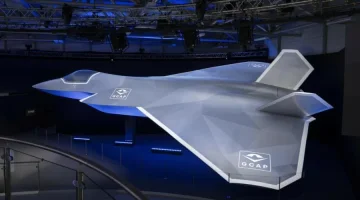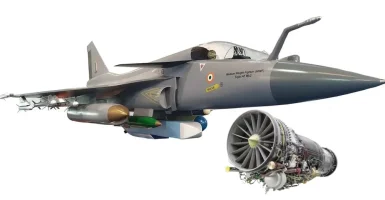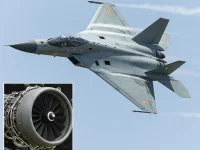- Views: 2K
- Replies: 17
British aerospace giant Rolls-Royce has proposed a partnership with India's Hindustan Aeronautics Limited (HAL) to jointly develop and produce a new engine for the CATS Warrior, a sophisticated unmanned combat drone.
This potential collaboration marks a significant step forward for India's indigenous Combat Air Teaming System (CATS) program.
The proposal comes as HAL re-evaluates the power requirements for the CATS Warrior drone, officially classified as an unmanned combat aerial vehicle (UCAV). The drone's maximum takeoff weight has recently been increased from 1.3 tons to 2.1 tons to support more advanced systems and payloads.
While the current HAL PTAE-W turbojet engines, each generating 3.7 kilonewtons (kN) of thrust, meet the platform's basic needs, a more powerful engine is being sought for optimal performance and future growth.
Developed by HAL's Aircraft Research and Design Centre (ARDC), the CATS Warrior is a stealthy "loyal wingman" aircraft. It is designed to fly alongside and support manned fighter jets of the Indian Air Force (IAF), including the Tejas, Sukhoi-30 MKI, and future platforms like the AMCA and TEDBF.
The drone, showcased as a full-scale model at Aero India 2025, features advanced capabilities such as autonomous take-off and landing and is central to India's ambitions in modern aerial warfare.
This push for a new engine is also driven by long-term plans for a more advanced version of the drone, the CATS Warrior MkII.
Envisioned as a 3-ton mini-strike aircraft, the MkII variant would require a significantly more powerful propulsion system. Its design includes an internal weapons bay and external hardpoints capable of carrying up to 650 kilograms (kg) of payload, including beyond-visual-range air-to-air missiles (BVRAAMs) like the indigenous Astra missile.
A partnership with Rolls-Royce, a world leader in engine manufacturing, could provide HAL with critical technology and expertise, accelerating the development timeline for India's unmanned combat platforms.
Such a collaboration would enhance India's self-reliance in the critical field of aero-engine technology and bolster its strategic military and defence capabilities.




